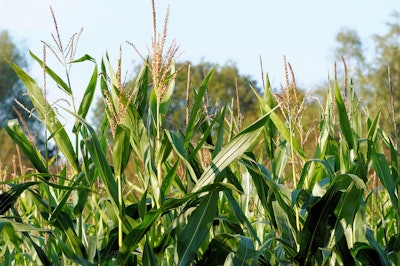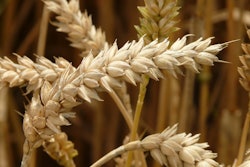
In National Geographic’s March 2015 issue an article delves into the history of what’s being called a War on Science. It’s a trend across many scientific fields, where the viewpoints of the general populace do not match those of the scientific community. One of the fundamental scientific methods that seems to be getting an undue amount of negative attention is one of the primary tools of modern agriculture: genetic modification.
Genetically modified crops are far from the only thing under attack in agriculture. Modern techniques have been consistently called into question by consumers whose lives are no longer touched by the agriculture industry, but still have a strong desire to know what’s happening to the food their families consume. As consumers of the products that come out of the agriculture chain, they have the right to ask questions and get honest answers to those questions.
“What’s needed is just more information and understanding,” explained Sam Eathington, Monsanto Company’s head of global breeding. “Because it’s easy to create the scare factor, slap a label on GMOs and make it seem like they’re really Frankenfoods and are going to take over the world. The reality is this stuff is very precise and more rigorously tested for safety than any of our conventional products.”
Getting the message out
How will society become better informed about GMOs? Those in the industry who work every day toward feeding the world should explain to friends, family and neighbors what the technology is, why we need it now and its potential in the future. If every part of the agriculture chain doesn’t do its role informing the public, the industry as a whole risks that message being told for us, more than likely by the opponents of agriculture.
Getting the public to hear modern agriculture’s side of the GMO debate will not be an easy task. This is some of the most advanced technology out there and something those in commercial agriculture haven’t had to explain or know much about in the past. This article will help you answer some of those questions and provide the resources to help individuals find all the information they need.
What are genetically modified organisms?
The greatest achievement of the modern agriculture system is that for a majority of those in industrialized nations, getting food is as easy as taking a trip to the grocery store. By efficiently meeting the basic need for nourishment, it allows consumers to focus on other things. That convenience has the side effect of leaving gaps in consumer knowledge about agriculture and how it has evolved alongside humans throughout their history. At its core, agriculture is the process of modifying plants and animals through selective breeding.
“When you think of genetically modified organisms, we have to understand that we’ve already been genetically modifying organisms throughout the human history of plant breeding and selection,” Eathington said.
The process used by humans since the beginning was to take a plant that had a trait we desired, breed it, and hope that not only that trait was transferred to its offspring, but also that no negative qualities came with it. Ultimately this was a very long process with severe limitations.
Modern genetic modification techniques involve inserting particular strands of DNA, known to carry a specific trait, into the genome of the plant without changing the rest of its DNA.
“What we are doing now is being very precise,” Eathington explained. “Saying here is a gene or a pathway we need to modify and here is specifically how we need to modify it so the plant now has resistance to corn rootworm. As much as plants have naturally tried to evolve, and as much as humans have sought to select and breed for that, we couldn’t create an effective solution for rootworm that is in the plant. That’s where an excellent example of biotechnology [comes in], taking Bt, which has a long history of being used in even the organic industry, and taking the gene that makes the resistance and putting that into the plant. Now all of the sudden you have corn that is resistant to corn rootworm through this Bt technology, which we would call a GMO sort of plant. It really is just a nice extension of what evolution, humans have always been doing.”
What kind of testing is done on genetically modified crops?
A concern often brought up about GM crops is that they haven’t been adequately tested for long-term side effects.
But Eathington contends that they are. “They’re actually tested and evaluated more than any other plant species that was created through conventional breeding or natural selection that we are using in food production today.”
Plants bred through more traditional means have far fewer regulatory hurdles to jump through, even though they are far less precise than the methods used to create GM crops.
“我认为人们误解的一件事是我们’t] just say ‘okay this is safe,’” Eathington said. “[Monsanto] is part of the process that generates the data. The FDA or EPA goes through and does their review process, sets the standards and guidelines and says ‘here is what we want to evaluate and test and go through.’
“It’s crucial to remember that it’s not just the U.S. government. This grain as you know leaves the United States and goes to many other countries, and we have to get all of those countries’ approval to import that grain. They go through their own review process and evaluation.”
It’s not just companies and governments testing GMOs. In March of 2014, a group of Italian scientists compiled and reviewed scientific research done over the past 10 years for the scientific journal Critical Reviews in Biotechnology. The list they put out contains 1,787 separate studies determining that there are no serious hazards with GMO crops.
Are they safe for the environment?
The question of whether GM crops are good for the environment is, on the surface, easy to answer. Extensive testing goes into every GM plant and its effect on the environment before the crop is released to the market.
“We look for nontarget impacts,” Eathington explained. “For example, in the Bt situation we have to study whether the protein has an impact on a whole range of different species. We have to understand what that protein might do if it’s in the soil; what that protein is going to do when it’s in the different parts of the plant; where it’s going to break down, how it’s going to go.”
So yes, GM plants are as safe as any other crops, maybe even better than other crops because they reduce the amount of pesticide needed.
“From a farming point of view, they are far more efficient by not putting down insecticide,” Eathington said. “This is a good thing for them and the soil condition. We are also reducing runoff, soil erosion and putting more organic matter back into the field. The whole system starts to change when you enable those farming practices to be more efficient.”
Perhaps the biggest and least understood advantage is that GM crops make it easier to incorporate low tilling practices while still controlling weeds.
“We don’t till those fields two to three to four times using conventional tilling systems because we have better herbicide programs like Roundup Ready corn and soybeans that are broadleaf killers,” Eathington said. “We can come in and do a reduced tillage plant, spray it once, and we don’t need to go across that field three or four times and do the tillage practices that we once did.”
The right questions
The questions society asks about genetically modified crops and the environment is really a concern of modern day agriculture’s effect on the environment.
“I think sometimes [the reason] we get lost in the GMO debate is because [we are not] thinking about the right conversation, the right question,” said Eathington. “There is no doubt agriculture around the world changes the environment. I always ask people, ‘who will raise their hand and say I don’t need to eat?’ This is a tough dilemma that we, as a society, have to make choices on. The real question is how you use every tool possible to continue to make production agriculture as efficient and sustainable as you possibly can. Long term, that’s how we actually change the environmental footprint and impact that productive agriculture can have. I think we get a little too focused on what is the GMO doing to the environment. We really should be thinking about how we use every tool to help the production of agriculture have a better environmental footprint.”
GMOs are, like it or not, the face of modern agriculture. When society questions GMOs they’re really asking what agriculture is today and if it does have our best interests at heart.
The United Nations’ World Population Prospects: the 2012 Revision puts the world’s population at 9.6 billion by the year 2050, a challenge well known in the agriculture industry. But as Eathington put it, who’s going to raise their hand and say “I don’t need to eat,” or decide that those people don’t deserve to eat or they can only eat a certain way?
This is the challenge the industry needs to overcome — how to feed everyone well. Agriculture will need every tool at its disposal in the coming years. When a tool like genetic engineering comes under attack, it’s up to everyone in agriculture to defend it because ultimately even one weakened link will affect the whole chain.

.jpg?auto=format%2Ccompress&crop=faces&fit=crop&h=48&q=70&w=48)




















